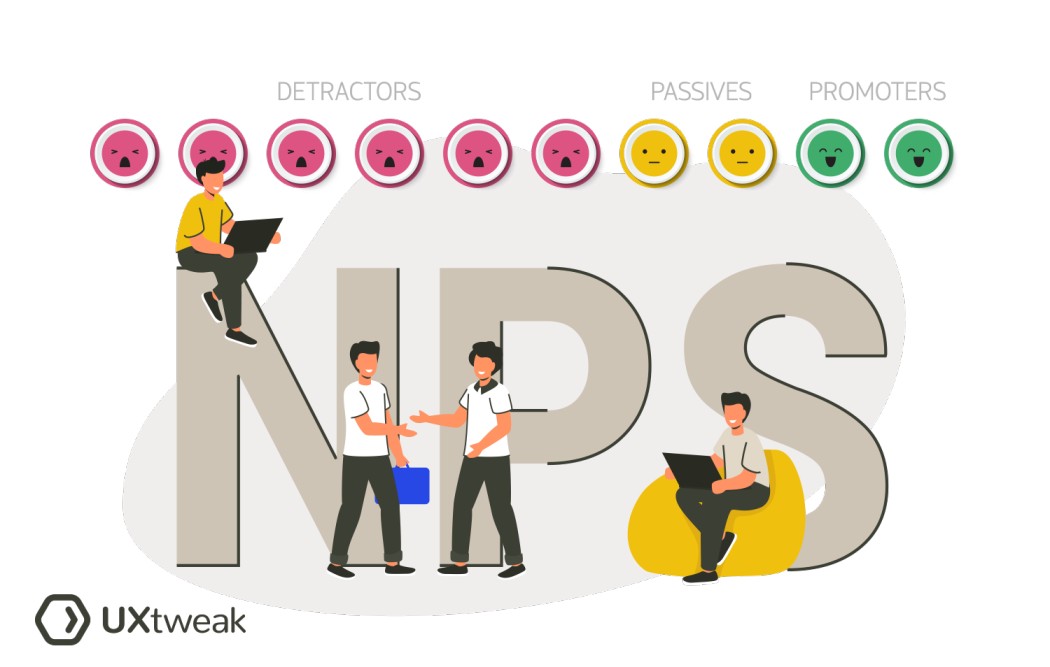Where is the net promoter score used?
NPS is commonly used as a benchmarking tool to evaluate customer satisfaction, identify areas for improvement, and track changes in customer sentiment over time. It is employed by organizations of all sizes, ranging from small businesses to large corporations.
Some common areas where NPS is used include:
- Business and product development
- Customer service and support
- Market research
- User research
- CX management
- Competitive analysis
- Employee management
In the context of user experience (UX), Net Promoter Score (NPS) can be measured by incorporating it into post-interaction surveys or feedback collection methods.
Why is net promoter score important?
Net Promoter Score (NPS) is important to measure for several reasons:
- Customer loyalty and advocacy: NPS provides a measure of customer loyalty and advocacy by gauging the likelihood of customers recommending a product, service, or brand to others. Satisfied and loyal customers are more likely to promote and advocate for a business, leading to positive word-of-mouth, increased referrals, and potential new customers.
- Customer Experience Improvement: NPS helps identify areas for improvement in the customer experience. By analyzing user feedback from Promoters, Passives, and Detractors, organizations can pinpoint specific pain points, identify opportunities for enhancement, and prioritize efforts to address customer needs. It provides actionable insights to enhance customer satisfaction and loyalty.
- Feedback loop: NPS facilitates a feedback loop between businesses and customers. It encourages ongoing dialogue and engagement with customers, enabling organizations to continuously learn, adapt, and improve their offerings based on customer feedback. This iterative approach leads to iterative improvements in the customer experience.
How to calculate net promoter score?
To calculate the Net Promoter Score (NPS), follow these steps:
- Survey your customers: Ask them the following question: “On a scale of 0-10, how likely are you to recommend our [product/service/brand] to a friend or colleague?”
- Categorize respondents: Based on their ratings, classify respondents into three groups:
- Promoters: Those who respond with a 9 or 10. These are loyal and enthusiastic customers who are likely to recommend your brand.
- Passives: Those who respond with a 7 or 8. They are somewhat satisfied customers but are less likely to actively promote your brand.
- Detractors: Those who respond with a score of 0 to 6. These are unhappy customers who may even spread negative word-of-mouth about your brand.
- Calculate the percentages: Calculate the percentage of respondents in each group by dividing the number of respondents in each category by the total number of respondents.
- Calculate the NPS: Subtract the percentage of Detractors from the percentage of Promoters. The resulting number is your Net Promoter Score. The score can range from -100 to +100.
The formula for calculating NPS is: NPS = % Promoters – % Detractors. For example, if 50% of respondents are promoters, 20% are detractors, and 20% are passives, your NPS would be 50-20=30.
FAQ
A good Net Promoter Score (NPS) varies depending on the industry and competitive landscape. Generally, an NPS above 0 is considered positive, with higher scores indicating stronger customer loyalty and advocacy. NPS benchmarks can differ, but a score above 50 is often considered excellent.
To improve Net Promoter Score (NPS), focus on enhancing the overall customer experience. This can be achieved by actively listening to customer feedback, addressing pain points, and implementing improvements based on customer insights. Providing exceptional customer service, delivering on promises, and building strong relationships with customers are also key factors in improving NPS.





